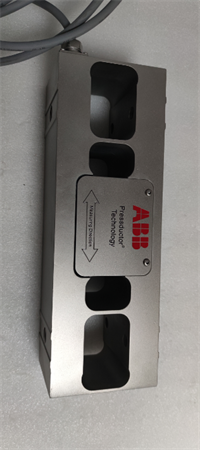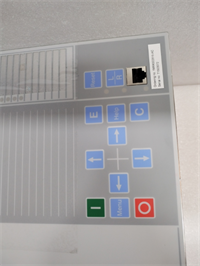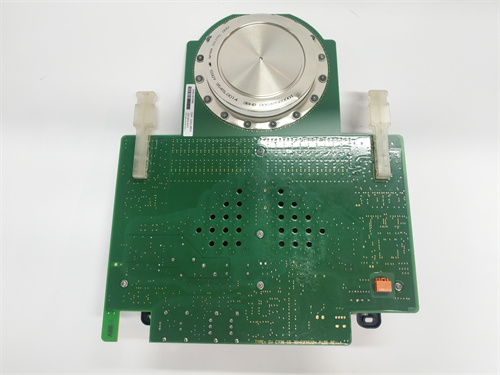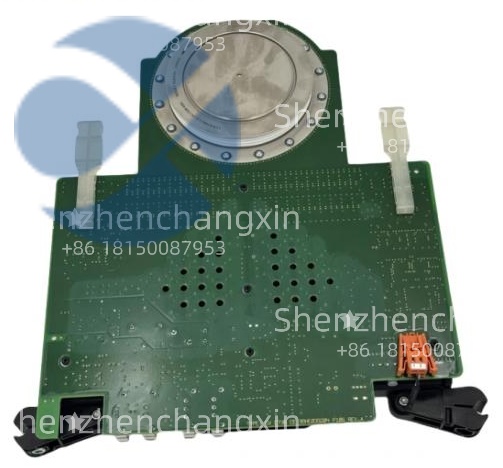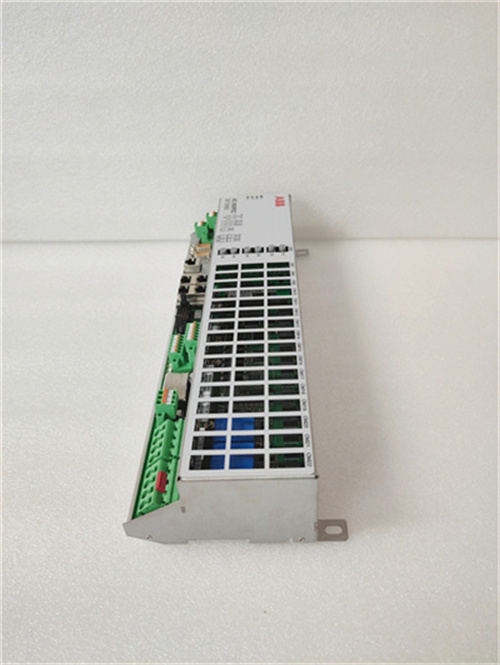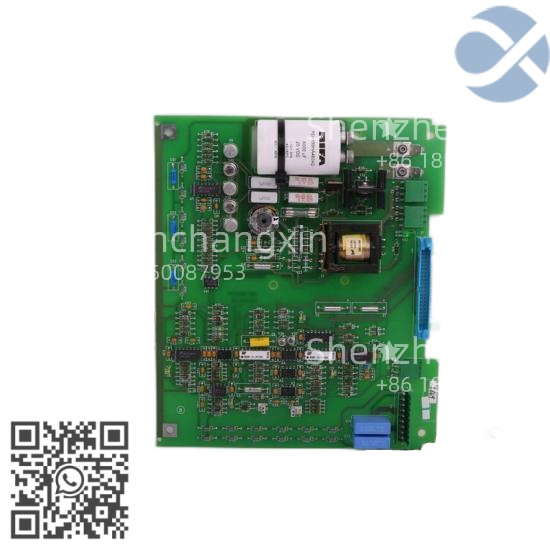 ABB 1KHL178025R0102P (COM02) Product Overview
ABB 1KHL178025R0102P (COM02) Product Overview
In the era of “digital interconnection” in industrial automation, data transmission between devices is like “blood flow,” and the ABB 1KHL178025R0102P (COM02) is the “communication bridge” that connects this channel! Whether it’s the real-time data interaction between a DCS system and dozens of PLCs in a chemical industrial park, the command transmission between robots and production line sensors in an automotive factory, or the status reporting between generator sets and monitoring systems in a power plant, all rely on its stable data transmission—if the communication module “fails,” the entire system may be “paralyzed.”
Those of us in industrial control know that the biggest threats to industrial communication are “disruptions” and “slowness”: data interruptions can lead to equipment malfunction, and slow transmission can cause missed opportunities for process adjustments. The ABB 1KHL178025R0102P (COM02) is highly reliable in two key aspects: its Gigabit Ethernet port supports the Profinet IRT protocol with real-time performance of ≤1ms, ensuring even high-speed commands from automotive welding robots are instantly transmitted to the controller; its dual-network redundancy design is even more impressive—both Ethernet ports are connected simultaneously, and if one fails, the other takes over within 0.1 seconds, ensuring uninterrupted data transmission. A power plant customer previously used it for generator monitoring; when the main network was struck by lightning, the backup network immediately took over, preventing any data loss and avoiding a shutdown.
Even more reassuring is its exceptional compatibility: it can connect to ABB’s own AC500 PLC and 800xA DCS, as well as third-party inverters and sensors (such as Siemens and Schneider equipment), without requiring additional protocol converters. An electronics factory customer previously used equipment from different brands, and communication between them was always incompatible. After installing the ABB 1KHL178025R0102P (COM02), all devices were connected to the network with a single configuration, and data could be displayed on a single monitoring screen. Maintenance personnel no longer needed to switch between systems, resulting in a 30% increase in efficiency. ABB’s industrial communication modules truly understand on-site needs!
Key Features and Advantages
Multi-protocol compatibility, seamless device communication: The ABB 1KHL178025R0102P (COM02) supports three major industrial protocols: Profinet IRT, Modbus TCP, and EtherNet/IP, and is also compatible with ABB’s proprietary protocols. Whether it’s ABB’s own equipment or third-party brands (Siemens, Rockwell, Schneider Electric), seamless networking is possible. Previously, an auto parts factory had ABB robots, Siemens PLCs, and Rockwell inverters in its workshop. After installing the ABB 1KHL178025R0102P (COM02), no additional converters were needed. Data from all the equipment could be transmitted to the same monitoring system. Previously, three people were needed to monitor different devices; now, one person can handle it, significantly reducing labor costs.
High real-time performance, “zero-delay” command arrival: Industrial control has extremely high real-time requirements. For example, if the temperature of a chemical reactor exceeds the limit, a control command delayed by even one second could be dangerous. The ABB 1KHL178025R0102P (COM02)’s Profinet IRT protocol has a real-time performance of ≤1ms, making data transmission lightning fast. A chemical customer used it to control the stirring motor of a reactor. When the temperature sensor detected over-temperature, the stop command was transmitted via the module to the motor controller within 0.5 seconds, preventing the reaction from going out of control. If a regular communication module (real-time performance ≥10ms) were used, the optimal control opportunity might have been missed. Dual-network redundancy ensures uninterrupted communication: The ABB 1KHL178025R0102P (COM02) has two Gigabit Ethernet ports, supporting MRP/PRP redundancy protocols, allowing simultaneous connection to two independent networks. If the primary network is interrupted due to a fault (such as a broken network cable or a malfunctioning switch), the backup network will automatically switch over within 0.1 seconds, ensuring uninterrupted data transmission. A power plant used it to transmit generator operating data. On one occasion, the primary network was damaged by lightning, but the backup network took over instantly without data loss, and the generators continued to operate normally. Without redundancy, at least two hours of downtime would have been required to repair the network, resulting in losses of nearly one million yuan.
Durable and robust, suitable for various environments: Industrial environments are complex; high temperatures, low temperatures, and electromagnetic interference can all affect the communication module. The ABB 1KHL178025R0102P (COM02) features a wide temperature range, operating normally from -20℃ to 60℃, making it suitable for outdoor control cabinets in Northeast China during winter and sweltering workshops in Southern China during summer. Furthermore, its high isolation level allows it to withstand 250V AC interference between the power supply and communication ports, ensuring data transmission is unaffected even near high-power motors or welding machines. One metallurgical plant customer installed it near a blast furnace, where temperatures frequently reach 55℃ and electromagnetic interference is strong; the module still operated stably without a single data packet loss.
English Version
The ABB 1KHL178025R0102P(COM02) serves as a critical industrial Ethernet communication module, enabling seamless data transmission across diverse automation systems. Supporting three major industrial protocols—Profinet IRT, Modbus TCP, and EtherNet/IP—along with ABB’s proprietary protocols, it facilitates “barrier-free communication” between ABB equipment (e.g., AC500 PLC, 800xA DCS,IRC5 robots)and third-party devices(Siemens,Rockwell,Schneider),eliminating the need for additional protocol converters.
A standout feature is its ultra-high real-time performance: Profinet IRT ensures data transmission latency ≤ 1ms, critical for time-sensitive applications like automotive welding robot control or chemical reactor temperature regulation. In one chemical plant application, the module transmitted a “stop” command to a stirrer motor within 0.5ms of detecting an over-temperature event,preventing a potential process failure—far faster than standard modules(latency≥10ms)that risk missing critical control windows.
Dual-network redundancy(MRP/PRP protocols)enhances reliability:two Gigabit Ethernet ports connect to independent networks,with automatic failover in≤0.1ms if the primary network fails(e.g.,cable damage,switch failure).A power plant customer reported no data loss or downtime during a lightning-induced primary network outage,as the backup network took over instantly—avoiding an estimated 2-hour shutdown and nearly 1 million RMB in losses.
Engineered for harsh industrial environments, the module operates reliably from -20℃ to 60℃ and features a high isolation rating (250V AC between power and communication ports), ensuring immunity to electromagnetic interference from large motors or welding machines. With an MTBF of over 500,000 hours, it delivers long-term stability, making it an ideal choice for mission-critical applications in chemicals, power generation, and automotive Manufacturing.
Application Areas
Chemical Industry: Real-time data interaction between DCS, PLC, and sensors in chemical production relies heavily on the stable communication of the ABB 1KHL178025R0102P (COM02). A large chemical company uses it to connect an 800xA DCS and 20 AC500 PLCs to monitor the temperature, pressure, and level parameters of 10 reactors. The module’s Profinet IRT protocol ensures data transmission latency ≤1ms. When the reactor temperature exceeds the limit, the DCS can instantly issue adjustment commands to prevent the reaction from going out of control. Furthermore, it supports encrypted data transmission (SSL/TLS), ensuring that critical process data in chemical production is not leaked, complying with industry security standards. The dual-network redundancy design is also very practical; in one instance, when the workshop network cable was broken by a forklift, the backup network immediately took over without affecting the normal monitoring of the reactors.
Automotive Manufacturing Industry: Robots, PLCs, and vision sensors on automotive welding lines need to work collaboratively, and the ABB 1KHL178025R0102P (COM02) acts as the “coordinator.” A car manufacturer uses it to connect 15 IRC5 welding robots, 5 Siemens PLCs, and 10 sets of vision inspection equipment. The module simultaneously runs Profinet IRT (robot instructions) and Modbus TCP (PLC data) protocols. The robot’s welding instructions and the “weld point positioning” signals from the vision sensors are transmitted synchronously, controlling welding accuracy within 0.1mm and improving weld spatter pass rate by 4%. Furthermore, it supports remote diagnostics, allowing maintenance personnel to check the module’s operating status from their office via software, eliminating the need for daily factory inspections and improving efficiency by 50%.
In the power industry: Monitoring the operational data of power plant generator sets requires extremely high communication reliability, which the ABB 1KHL178025R0102P (COM02) can handle. A thermal power plant uses it to connect the generator set’s PLC and monitoring system, transmitting over 200 parameters such as speed, voltage, and current. The module’s dual-network redundancy design ensures uninterrupted data transmission; even if the primary network fails, the backup network can seamlessly switch over. Its wide-temperature design is also well-suited for power plant environments. Even with summer server room temperatures reaching 58℃, the module operates stably without a single data packet loss. Furthermore, it supports remote firmware upgrades, allowing module program updates without downtime, thus avoiding unit shutdowns due to upgrades.
In the electronics assembly industry: Electronics factories often have a wide variety of production line equipment from diverse brands, making communication difficult. The ABB 1KHL178025R0102P (COM02) solves this problem. A mobile phone OEM uses it to connect ABB assembly robots, Panasonic PLCs, and Schneider inverters. The module is compatible with Profinet and Modbus TCP protocols, allowing data from all devices to be aggregated into the MES system. Managers can view the capacity and pass rate of each production line on the monitoring screen, eliminating the need for individual device statistics. Previously, it took 5 people 8 hours to compile capacity data; now, the system automatically generates the data in 10 minutes, and the data accuracy has improved from 95% to 99.9%. Selection Guide/Purchase Recommendations
When choosing the ABB 1KHL178025R0102P (COM02), first clarify your communication needs: If you need to connect to multiple brands of equipment (e.g., ABB + Siemens + Rockwell), its multi-protocol compatibility is perfect; if you only need to connect to ABB’s own equipment, although it can work, if your budget is limited, you can consider a single-protocol module. However, from a long-term expansion perspective, the ABB 1KHL178025R0102P (COM02) is more flexible, and you won’t need to change modules when adding third-party equipment later.
Next, consider real-time requirements: If your application is high-speed control (e.g., robotic welding, reactor temperature control), you must ensure that you use its Profinet IRT protocol (real-time ≤1ms); if it’s just ordinary data acquisition (e.g., warehouse temperature and humidity monitoring), the Modbus TCP protocol is sufficient, but it is recommended to prioritize high real-time performance to avoid having to change modules later when upgrading processes. If your system is for critical scenarios (such as power plant generator sets or chemical reactors), you must use its dual-network redundancy function—you need two independent switches and network cables to form a primary and backup network so that it can automatically switch over in case of failure. For ordinary scenarios (such as workshop lighting control), a single network can suffice, but from a reliability perspective…

